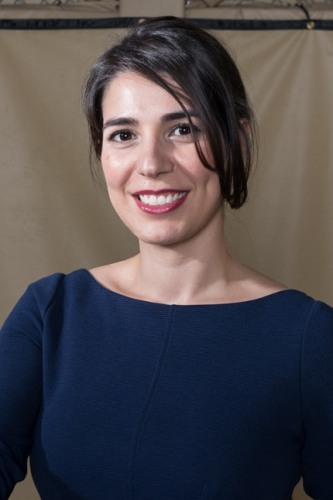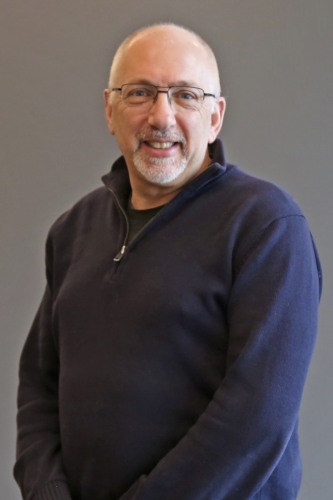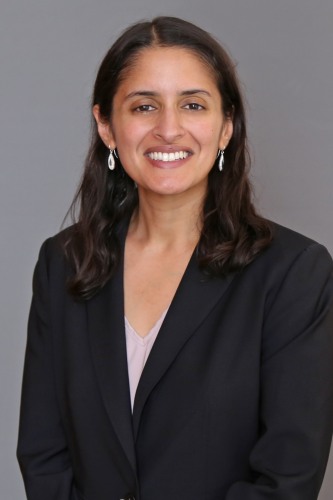Thirty-three Brown researchers, including ten from the School of Engineering, are receiving University research awards through 22 Research Seed grants. This annual program is aimed at helping early-stage research projects grow.
Research seed funding is competitively awarded annually by the Office of the Vice President for Research and helps faculty more successfully advance competitive research proposals by supporting the generation of preliminary data, pursuing new directions or collaborations in research, and other endeavors. Competitive proposals for sizable projects are expected to be submitted to an external funding organization within a year of the completion of the research seed fund period.
Projects from the School of Engineering include: Nora Ayanian and Kenny Breuer, who are researching “Data-driven stabilization of close-proximity quadrotor flight”; Lucas Caretta and Miguel Bessa for a project titled “Data-driven design of a low power, nanoscale neural network using non-linear spin-wave interference”; Nitin Padture who is researching “Emergent mechanical behavior of charged hetero-interfaces in solar cells”; Eric Suuberg and Franklin Goldsmith for the project titled “A novel route for destroying ‘forever chemicals’”; and Eric Darling, Anita Shukla and Edith Mathiowitz, who are researching “Long-circulating vascular treatment for life-threatening bloodstream infections.”
Data-driven stabilization of close-proximity quadrotor flight


Quadrotor flying vehicles (“drones”) are finding widespread use in many applications including search and rescue, remote monitoring, inspection in agricultural and industrial settings, and operations in hazardous or even extra-terrestrial environments. One critical weakness in this exciting new arena is the inability to operate dense swarms of quadrotors due to aerodynamic interference of the rotor wakes. This weakness also prevents many new and advanced applications such as synthetic aperture imaging or cooperative assembly tasks. The goal of this project is to acquire data on multi-quadrotor interactions – force, torque and velocity interactions – over a wide range of operating conditions and spatial separation, and to use data-driven analysis techniques to develop efficient, accurate and practical flight controllers to compensate for the close-proximity interference. Despite the importance of this problem to advanced flight robotics, there has been little work presented in this area. The collaboration between professors Breuer and Ayanian -- who bring expertise from the aerodynamic and computer science fields – presents an opportunity to put Brown at the forefront of high density cooperative drone flight control. The results from this effort will provide significant first steps necessary for the PIs to apply for longer-term, more substantial funding from government agencies (NSF, DARPA, NASA, etc) and private industry. Intellectual property related to the aerodynamic design and control of drone swarms, as well as trajectory planning for complex swarm maneuvers is anticipated.
PI: Kenneth Breuer, Professor of Engineering
Co-PI: Nora Ayanian, Associate Professor of Computer Science and Engineering
Data-driven design of a low power, nanoscale neural network using non-linear spin-wave interference


Semiconductor technologies are rapidly facing challenges in scalability, energy consumption, and reduced latency. These challenges are driving a significant effort to develop alternatives to CMOS-based technologies to meet the demands of future computing technologies. Neuromorphic computing could address these challenges with high performance and low-power artificial neural networks. These technologies can provide increased computing performance with enhanced features and reduced cost but rely on traditional chip technologies not designed for their operation. This collaboration seeks to develop a first of its kind spin wave neural network comprised of two-dimensional magnon scattering centers, also known as magnonic crystals. We hypothesize that by using inverse design machine learning processes and high throughput micromagnetic simulations, we will optimize the array of spin wave scattering sites to create a neural network capable of number classification based on spin wave interference patterns. In this collaborative proposal, our interdisciplinary team will test our hypothesis and address design challenges associated with the vast optimization parameter space by developing a coherent computation, materials synthesis and characterization, and spin wave imaging platform. This platform will enable a learning loop, where the prediction and discovery of unique magnonic crystal topologies will be reinforced by feedback from micromagnetic simulations and experimental verification via novel quantum imaging platforms. The outcomes of this project include a framework and design protocol by which to optimize spin wave scattering platforms for advanced computing, new fundamental insight on spin wave-spin wave interactions, and the experimental realization of a low power spin wave neural network.
PI: Lucas Caretta, Assistant Professor of Engineering
Co-PI: Miguel Bessa, Associate Professor of Engineering
Emergent mechanical behavior of charged hetero-interfaces in solar cells

Interfaces between dissimilar materials (semiconductors, dielectrics, metals) are ubiquitous in multi-layered energy-conversion and -storage devices, such as solar cells and batteries. The reliability of these devices critically depends on the mechanical adhesion at these interfaces. Since most of these functional devices are ‘dynamic,’ during their operation under external stimuli (electric field, light) many hetero-interfaces typically accumulate charged species (electrons, holes, vacancies, interstitials), thereby generating internal charged layers. Unfortunately, to-date the charged-interface effects have not been considered explicitly in the adhesion and fracture of interfaces in these devices. The proposed research will focus on the burgeoning perovskite solar cells (PSCs) where such effects are expected to be critical for their long-term durability and reliability. The objective is to develop experimental tools for gaining fundamental understanding of the important effects of accumulated charge and external stimuli (electric field, light) on the adhesion and fracture behavior of a range of hetero-interfaces relevant to PSCs. This will address the wide knowledge gap in this important area, and help take materials science of adhesion to the next level, leading to discovery of hitherto unknown electro-photo-mechanical coupled phenomena. The basic tools and understanding developed here can be extended to the study of other energy-related devices (batteries, fuel cells, supercapacitors) for an outsized impact. The results from the proposed seed project will serve as preliminary data for at least two sustainable-energy-related proposals being developed by PI and his colleagues for submission to external agencies.
PI: Nitin Padture, Otis Everett Randall University Professor of Engineering
A novel route for destroying “forever chemicals”


There is growing concern regarding chemical compounds from the per- and poly-fluoroalkyl substances (PFAS) family of industrially produced materials. They offer many possibilities for human exposure, and there is increasing concern, regarding negative health effects from such exposures. The term “forever chemicals” has been applied to these materials because many in this class of compounds do not break down in the natural environment. Allowable regulatory levels for PFAS in drinking water are now in the parts per trillion range. Because there is no easy method to break these chemicals down this has led to widespread adoption of carbon adsorption technologies to remove them from water. While this removes the PFAS from drinking water, they remain in the activated carbon, which cannot be dumped in landfills. The PFAS need to be destroyed, which has often involved incineration of the PFAS-containing carbons. Hazardous waste incinerators are unpopular and difficult to operate, and there is a desire to identify alternate destruction technologies. Recent work at Brown has identified the particular chemical species which make incineration effective, and other much older work (from the coal liquefaction field) points to the possibility of designing a completely different PFAS destruction technology. What is proposed is a laboratory demonstration of the new technology. A successful demonstration would allow follow-on proposals to any of a number of agencies all of whom are interested in the problem of PFAS destruction (e.g., EPA, DOD- through its SERDP and ESTCP programs, NSF).
PI: Eric Suuberg, C.V. Starr Professor of Technology Entrepreneurship, Professor of Engineering
Co-PI: Franklin Goldsmith, Associate Professor of Engineering
Long-circulating vascular treatment for life-threatening bloodstream infections
The goal of this project is to demonstrate feasibility for a long-circulating treatment targeting bacterial toxins that contribute to the debilitating effects of bloodstream infection (BSI). Technologies developed in the participating investigators’ laboratories will be combined as a novel solution to the problem. Shukla brings expertise in creating nanoparticle formulations that are responsive to bacterial virulence factors, such as hemolysins. Lipid vesicle nanoparticle formulations developed by Shukla will be combined with a technology developed by Darling and Mathiowitz, hyper-compliant microparticles (HCMPs), that hold great promise as long-circulating vascular carriers. HCMPs are spherical hydrogel microparticles sized similarly to white blood cells but with an extremely low elastic modulus that allows them to squeeze through small constrictions in the vasculature. The primary goals of the proposed project are to 1) develop a hemolysin-sorbent HCMP using red blood cell (RBC) membrane-derived nanoparticle vesicles for reducing RBC morbidity associated with BSIs and 2) assess HCMP persistence, biodistribution, and ultimate fate in an in vivo model. A combination of in vitro and in vivo experiments will be completed to achieve these goals. The anticipated findings will lay the groundwork for a larger project and external proposal to demonstrate the therapeutic effectiveness of continuously circulating HCMPs that contain hemolysin-sorbent nanoparticles for ameliorating the negative impact of BSI.
PI: Eric M. Darling, Associate Professor of Medical Science, Associate Professor of Engineering, Associate Professor of Orthopaedics
Co-PI: Anita Shukla, Elaine I. Savage Associate Professor of Engineering
Co-PI: Edith Mathiowitz, Professor of Pathology and Laboratory Medicine, Professor of Engineering


